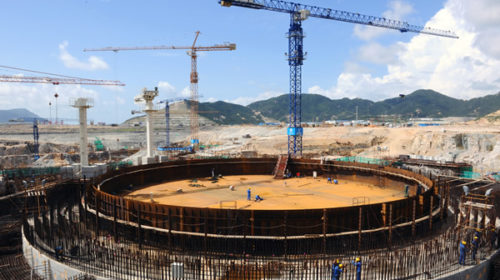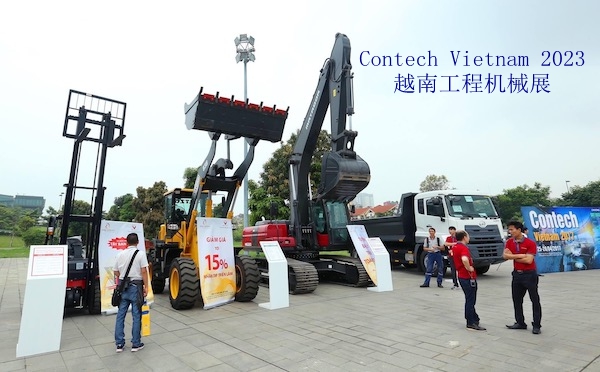2019 China’s Construction Machinery Industry Prospect: Global Uncertainties as Well as Opportunities
Overview of the Chinese construction equipment market
In 2018, the Chinese construction equipment market performed well, with the production and sales of staple products growing rapidly. According to the data from relevant departments of the Chinese government, from Jan. to Nov. 2018, the sales volume of excavators in China totaled 187,393 units, increasing by 48.4% YOY; the sales volume of loaders totaled 109,000 units, increasing by 22.3% YOY. And other construction equipment such as compacting machinery and concrete machinery all saw growths in both sales and production.
Major Market Drivers
According to CRI’s “Research Report on China’s Construction Machinery Industry, 2018-2022″, the major drivers of the fast growth include:
(i) Increasing infrastructure investment in China: To sustain economic growth, China’s central and local governments invest heavily in infrastructure such as high-speed railways, subways and public facilities. For example, in 2018, China invested CNY 732 billion (USD 107.6 billion) in fixed assets to build 4,000 kilometers of railways including 3,500 kilometers of high-speed railways, setting a new record in high-speed railway construction. It is expected that from 2019 to 2025, China’s annual investment in railways will be no less than CNY 110 billion. By Jan. 2019, urban rail transit facilities (subways and light railways) are being built or planned for over 40 Chinese cities. CRI estimated that from 2019 to 2025, China’s annual investment in urban rail transportation projects will exceed USD 50 billion. Both railway construction and urban rail transportation will need construction equipment of more than USD 8 billion during this period. And road construction, municipal works and real estate projects will have even greater demand for construction equipment;
(ii) Replacement of construction equipment: According to CRI’s “
Research Report on China’s Construction Machinery Industry, 2018-2022 ”, by the end of 2018, the quantity of construction equipment in China had exceeded 5 million units. On the assumption that the replacement rate is 10%, more than 500,000 units need to be replaced every year; and
(iii) Growing export markets: According to China Customs, China’s excavator exports totaled about 19,000 units in 2018, up by about 98% YOY; China’s loader exports totaled about 21,000 units from Jan. to Nov. 2018, up by about 21% YOY. And the export volume of other construction equipment all attained growth. The growth of China’s construction equipment exports in 2018 was driven by Chinese construction equipment’s price advantage on the international market and the Belt and Road initiative.
Global Uncertainties
(i) Brexit
According to CRI’s “ Research Report on China’s Construction Machinery Industry, 2018-2022 ”, in 2017, the sales revenue of China’s construction equipment industry totaled about USD 82 billion, of which about USD 20.1 billion, or 1/4, came from exports. Evidently, the export markets are vital to China’s construction equipment industry. In 2017, China’s construction equipment exports to the E.U. amounted to USD 2,389 million, registering a YOY increase of 25.51% and accounting for 11.9% of the total value of China’s construction equipment exports. If Brexit causes economic fluctuations to the U.K. and the E.U., it will inevitably have an adverse impact on the export of Chinese construction equipment.
(ii) Sino-U.S. trade war
In 2017, China’s construction equipment exports to the U.S. amounted to USD 2,772 million, accounting for 13.8% of the total value of China’s construction equipment exports. With the outbreak of the Sino-U.S. trade war, the U.S. government is increasingly likely to raise the tariffs on Chinese construction equipment because some of the products are closely related to the Made in China 2025 program. If the trade war continues, a considerable part of China’s construction equipment exports to the U.S. will face higher tariffs, which will result in a sharp decline in China’s construction equipment exports to North America in 2019.
(iii) Industrial transfer
According to CRI’s “Research Report on China’s Construction Machinery Industry, 2018-2022 ”, some construction equipment manufacturers in China are very likely to gradually move their factories to Southeast Asian countries such as Vietnam to avoid additional tariffs if the trade war continues. It is obvious that large-scale industrial transfer will weaken the strength of China’s construction equipment industry.
the Belt and Road Opportunities
(1) Progress of and construction investment boosted by the Belt and Road initiative
As the data about China’s construction equipment exports in 2018 has not been announced, CRI’s “Research Report on China’s Construction Machinery Industry, 2018-2022” is based on the data in 2017. As is known to all, the major sources of investment in Belt and Road projects are China’s state-owned enterprises. Therefore, infrastructure projects under the Belt and Road initiative prefer Chinese construction enterprises and Chinese construction equipment. In 2017, Chinese enterprises signed 7,217 contracts on contracting projects in 61 Belt and Road countries. The contract amount totaled USD 144.32 billion, registering a YOY growth of 14.5% and a CAGR of 24.8% from 2015 to 2017. The contract revenue reached USD 85.53 billion, registering a YOY growth of 12.6% and a CAGR of 11.1% from 2015 to 2017. In 2017, China’s construction equipment exports to Belt and Road countries reached USD 8,765 million, increasing by 18.3% YOY and accounting for 43.6% of the total value of China’s construction equipment exports. It’s clear that the advancement of the Belt and Road initiative facilitates the export of Chinese construction equipment.
(2) Marketing strategies of Chinese construction equipment manufacturers including OEMs in Belt and Road countries Belt and Road countries are increasingly important to Chinese construction equipment manufacturers including OEMs as China’s construction equipment exports to these countries keep rising.
CRI’s market survey shows that Chinese construction equipment manufacturers including OEMs adopt the following marketing strategies in Belt and Road countries:
- (i) establishing branches or offices to broaden the markets;
- (ii) cooperating with the Chinese construction enterprises that have contracted many projects in these countries to promote the sale of their goods;
- and (iii) acquiring local construction equipment factories or establishing new factories to localize production. For example, SANY Group has established factories in Turkey, Indonesia and Russia, and Zoomlion Heavy Industry Science & Technology Co., Ltd. has established factories in Italy, Germany and India.
About CRI
CRI is a research and consulting company focusing on various industries and markets.
CRI provides customized industry research services for initial public offerings, corporate mergers and acquisitions, business development, market launch and financing for clients varying from private companies to the government entities.
The information contained in the CRI Report was derived from data and intelligence collected from various sources which include but not limited to government and regulatory statistics, industry association reports and data and data obtained from interviews with manufacturers, distributors, experts and customers in related sectors.


